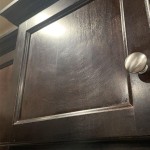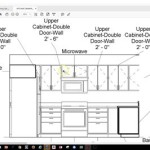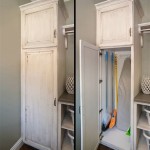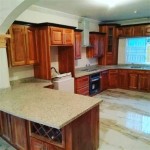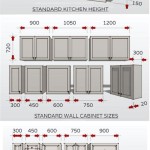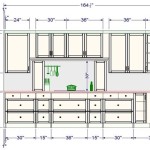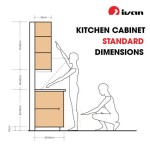Specialty Kitchen Cabinets: Functionality and Design
Specialty kitchen cabinets represent a category of cabinetry designed to address specific storage needs, aesthetic preferences, or functional challenges within a kitchen space. Unlike standard cabinet configurations, these options are crafted to optimize space utilization, enhance accessibility, and contribute to the overall design cohesiveness of the kitchen. The incorporation of specialty cabinets can transform a kitchen from a purely utilitarian area into a highly organized and visually appealing environment.
The demand for specialty kitchen cabinets stems from the increasing desire for personalized kitchen designs that accommodate individual lifestyles and culinary habits. Standard cabinetry often falls short in providing adequate storage for specific items, such as oversized cookware, spices, or specialized appliances. Furthermore, individuals with physical limitations may require modifications to cabinet design to facilitate easy access and use. Specialty cabinets provide tailored solutions to these challenges, ensuring a more efficient and comfortable kitchen experience.
The selection of appropriate specialty cabinets requires careful consideration of several factors, including the kitchen's layout, available space, the user's specific storage requirements, and the desired aesthetic style. A thorough assessment of these factors will guide the selection process and ensure that the chosen cabinets effectively address the identified needs. Consulting with a kitchen designer or cabinet specialist can provide valuable insights and assistance in navigating the diverse range of options available.
Space Optimization and Enhanced Storage
One of the primary benefits of specialty kitchen cabinets is their ability to maximize space utilization, particularly in kitchens with limited square footage. Innovative designs and configurations allow for the efficient storage of items that would otherwise clutter countertops or occupy valuable shelf space. Examples include pull-out spice racks, corner cabinets with rotating shelves (lazy Susans), and vertical dividers for storing baking sheets and cutting boards.
Pull-out spice racks, typically installed adjacent to the cooktop, provide readily accessible storage for a wide variety of spices and seasonings. These racks eliminate the need to rummage through cluttered shelves, allowing for quick and easy retrieval of desired ingredients. Similarly, pull-out pantries offer a convenient way to organize dry goods, canned goods, and other pantry staples. These pantries can be customized with adjustable shelves and dividers to accommodate items of varying sizes.
Corner cabinets often present a challenge in kitchen design due to their awkward shape and limited accessibility. Lazy Susans are a popular solution for maximizing the use of corner cabinet space. These rotating shelves allow for easy access to items stored deep within the cabinet, eliminating the need to reach and strain. Other corner cabinet options include blind corner pull-outs and corner drawers, each designed to address specific storage needs and spatial constraints.
Vertical dividers are particularly useful for storing baking sheets, cutting boards, and other flat items that tend to take up significant space when stacked horizontally. These dividers create individual compartments for each item, preventing them from sliding and clattering together. This configuration also makes it easier to retrieve specific items without having to move others.
Toe-kick drawers represent another innovative approach to space optimization. These shallow drawers, installed beneath base cabinets, provide additional storage for items that are not frequently used, such as holiday decorations or spare kitchen tools. Toe-kick drawers are particularly useful in kitchens with limited vertical space, where traditional drawers may not be feasible.
The strategic placement of specialty cabinets can significantly improve the functionality of a kitchen. For example, installing a pull-out trash and recycling bin cabinet beneath the sink can free up valuable floor space and keep unsightly waste containers out of sight. Similarly, a knife block insert within a drawer can provide a safe and organized storage solution for sharp knives, preventing accidental injuries.
Accessibility and Universal Design
Specialty kitchen cabinets can be designed to enhance accessibility for individuals with physical limitations, promoting independence and safety in the kitchen. Universal design principles, which aim to create environments that are usable by people of all abilities, are often incorporated into the design of these cabinets. Features such as pull-down shelves, adjustable height countertops, and touch-latch doors can significantly improve the usability of the kitchen for individuals with mobility impairments, visual impairments, or other disabilities.
Pull-down shelves allow users to easily access items stored in upper cabinets without having to reach or strain. These shelves are typically equipped with a mechanism that allows them to be lowered to a more accessible height with minimal effort. Adjustable height countertops can be raised or lowered to accommodate users of different heights or those who use wheelchairs. This feature is particularly useful for individuals who share a kitchen and have varying needs.
Touch-latch doors eliminate the need to grasp or pull handles, making it easier for individuals with arthritis or other hand impairments to open and close cabinets. These doors are typically equipped with a magnetic latch that releases with a gentle push. Roll-out trays within base cabinets provide easy access to items stored at the back of the cabinet, reducing the need to bend or reach.
The placement of appliances and storage solutions should also be considered in relation to accessibility. For example, installing a microwave below the countertop can make it easier for individuals in wheelchairs to use. Similarly, locating frequently used items within easy reach can minimize the need to stretch or bend.
The incorporation of contrasting colors and textures can also enhance accessibility for individuals with visual impairments. For example, using a dark countertop against light cabinets can improve visibility. Similarly, using textured cabinet pulls can make them easier to locate and grip.
Design Aesthetics and Customization
Specialty kitchen cabinets offer a wide range of design options, allowing for customization to match the overall aesthetic of the kitchen. From sleek and modern designs to traditional and rustic styles, there are specialty cabinets to complement any décor. The use of different materials, finishes, and hardware can further enhance the visual appeal of these cabinets.
Glass-front cabinets are a popular choice for displaying decorative items, such as china, glassware, or artwork. These cabinets can be used to create a focal point in the kitchen and add a touch of elegance. Open shelving provides another option for displaying items, while also providing easy access to frequently used items. However, open shelving requires more frequent cleaning to prevent dust accumulation.
The selection of cabinet hardware can significantly impact the overall look and feel of the kitchen. From minimalist pulls to ornate knobs, there are countless options available to suit different styles and preferences. The finish of the hardware can also be customized to match other fixtures in the kitchen, such as the faucet and light fixtures.
The use of different cabinet door styles can also contribute to the overall design aesthetic. Shaker-style doors, with their clean lines and simple design, are a popular choice for both modern and traditional kitchens. Raised-panel doors, with their more ornate detailing, are often used in traditional kitchens. Flat-panel doors, with their sleek and minimalist design, are a popular choice for contemporary kitchens.
The color and finish of the cabinets can also be customized to create a desired aesthetic. White cabinets are a classic choice that can brighten up a kitchen and create a sense of spaciousness. Dark cabinets can add drama and sophistication to a kitchen. Wood cabinets offer a natural and warm aesthetic.
The incorporation of decorative elements, such as crown molding, corbels, and decorative legs, can further enhance the visual appeal of specialty kitchen cabinets. These elements can be used to add detail and character to the cabinets and create a more custom look.
Ultimately, the selection of specialty kitchen cabinets is a personal decision based on individual needs, preferences, and budget. By carefully considering the factors discussed above, individuals can choose cabinets that not only optimize space and enhance accessibility but also contribute to the overall design and functionality of their kitchen.

Specialty Kitchen Cabinet Storage And Bath Remodeling Mn

Specialty Kitchen Cabinets Re Warehouse

Specialty Kitchen Cabinets Re Warehouse

Kitchen Storage Solutions Organize Your

Kitchen Cabinets They Don T Make Them Like Used To

Image Result For Specialty Kitchen Cabinets Home Kitchens Cabinet Interior

Specialty Cabinets Kitchen Rta Orange County Pre Made Whole Quartz Countertop Slab Prefab Granite Installation

Customizable Kitchen Cabinets With Modification And Availability Of Sizes

10 Special Kitchen Cabinet Features Innovative Blog

Level Up Your Kitchen With Specialty Cabinets Elm Construction
Related Posts

